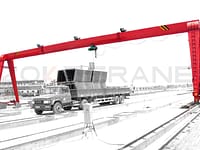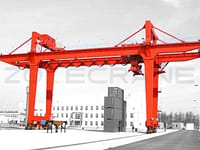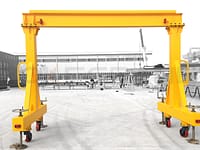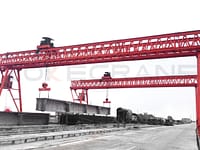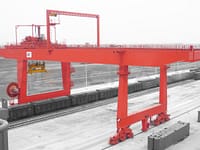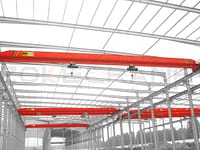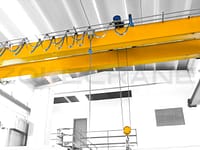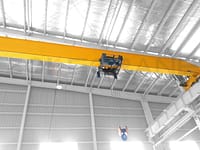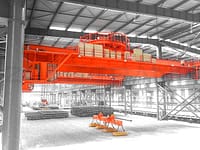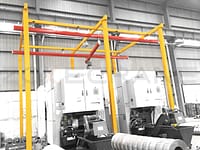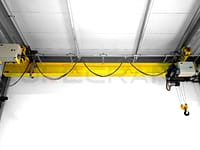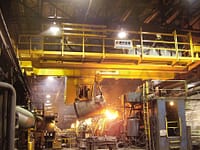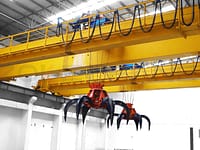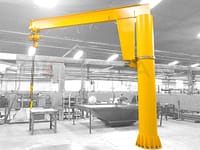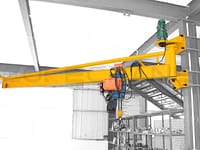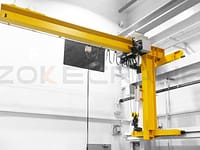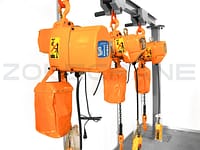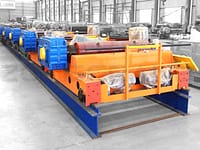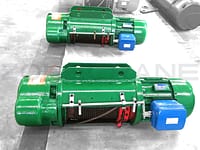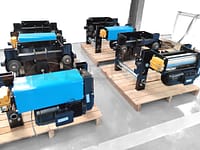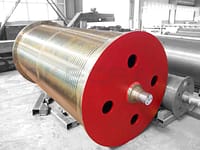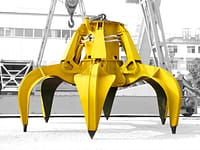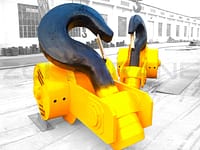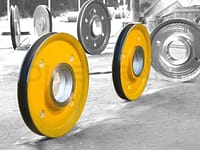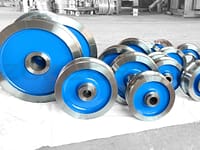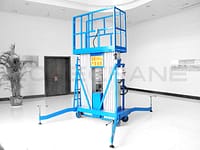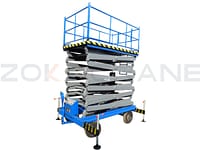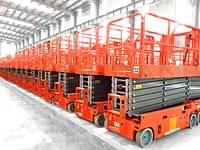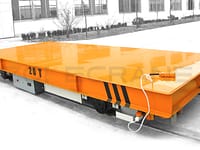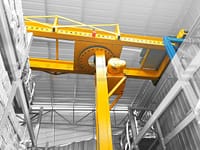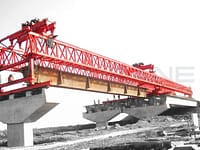As our society and economy continue to develop, the demand for the production of heavy overhead cranes is increasing, as is their use. The main machines used to transport materials in large warehouses and docks are heavy duty overhead travelling cranes. The structure of heavy overhead cranes is very complex and must be observed in time during actual use. In practice, attention must be paid to the maintenance and daily management of the crane, the principles of safety and prevention must be observed, and corrective measures must be taken immediately in the event of a fault to improve the safety and stability of the crane operation, thus further improving the efficiency of the crane.
The so-called heavy-duty overhead travelling crane is a lifting device for lifting materials in material yards, warehouses and production halls. The main components of the machinery and equipment include the bridge mechanism, the hoist mechanism and the operating mechanism associated with the trolley structure and the large trolley. These components of the mechanism mainly include couplings, bridges, rails, reels, end beams and reducers as well as travelling wheels and lifting pulleys. Therefore, the biggest factors affecting the performance of the lifting mechanism system are its own performance and the actual working environment.
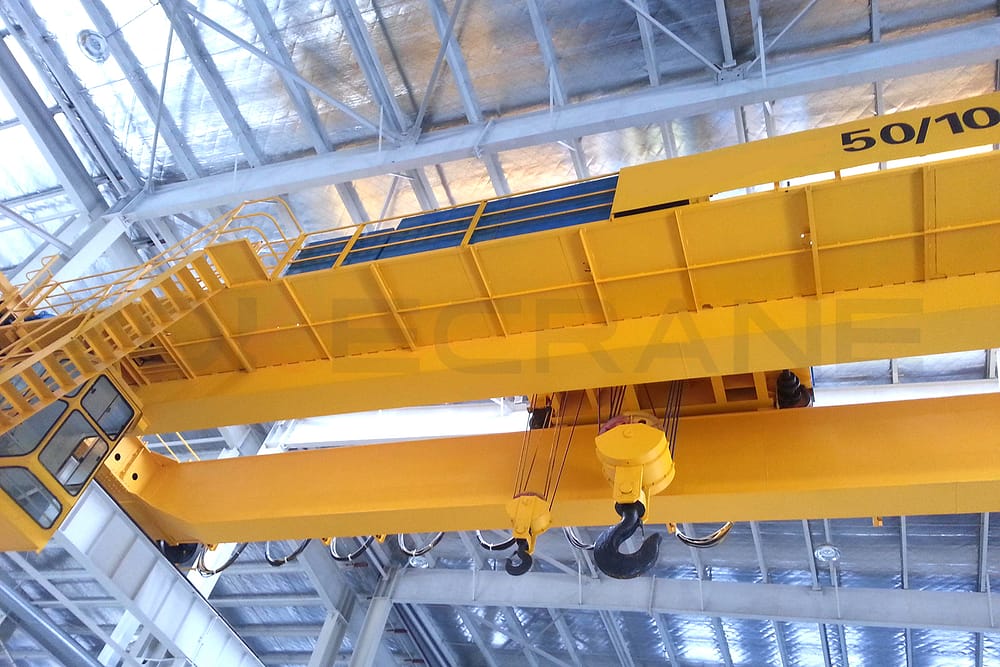
Analysis of common failures of heavy duty overhead cranes
The use of heavy overhead travelling cranes can lead to many failures. The most common failures are switch failures, wheel failures, mechanical brake failures, electrical component failures and wire rope failures.
1.Switch failure: If the crane switch fails, this can lead to a power failure. The main cause of this problem is the quality of the machine purchased. Incorrect maintenance and adjustment methods are used due to the relatively low technical competence of the people installing and servicing the machine.
2.Wheel failure: Causes of wheel failure,There are a number of reasons why a wheel may become abnormal. Firstly, the wheels are not installed with care. Due to improper installation, the wheel is tilted and a mark is formed by rubbing the edge of the wheel against the side of the track. There are problems with the track installation, the track is not in place, the foundation is sinking and there is no regular maintenance. Secondly there is a difference in drive speed between the two drive wheels due to the difference in effective wheel diameter. There are also differences between the rotating gears of the vehicle which allow the vehicle to fail during starting and stopping due to the tilting of the bodywork.
3.Brake failure: If the brakes have been in use for a long time and have begun to be severely damaged by wear and tear of the brake wheels, tie rods and electro-hydraulic push rod brakes differ from crane failures. In use, the shafts, holes and brake linings of the brake articulation points also have a certain degree of wear. The elasticity of the brake springs is reduced and the braking torque is greatly reduced. In addition, brake failures are caused by the articulation point of the lifting device, due to the dirt adhering to the brake wheel and rectifier coil towards the device, air or electro-hydraulic actuators mixed with insufficient oil from the hydraulic solenoid block, all of which are difficult to maintain and prevent the brake from opening properly. Heavy overhead crane installation and commissioning does not meet the relevant specifications, and the brake wheel overheating.
4.Electrical equipment failure: Failure of electrical equipment is more common in the use of heavy overhead cranes. Common failures are due to problems with the car resistor, main hook resistor and auxiliary hook resistor, resulting in abnormally hot or burning power cables, and can lead to problems with the car cam, hook master controller errors, gear stalls, confusion and other problems. Automatic contactors, positive and negative contactors as well as accelerators and other components in overhead cranes have more serious electromagnetic and arcing noises, and overheating and burning and other problems can occur as a result of such abnormal operation.
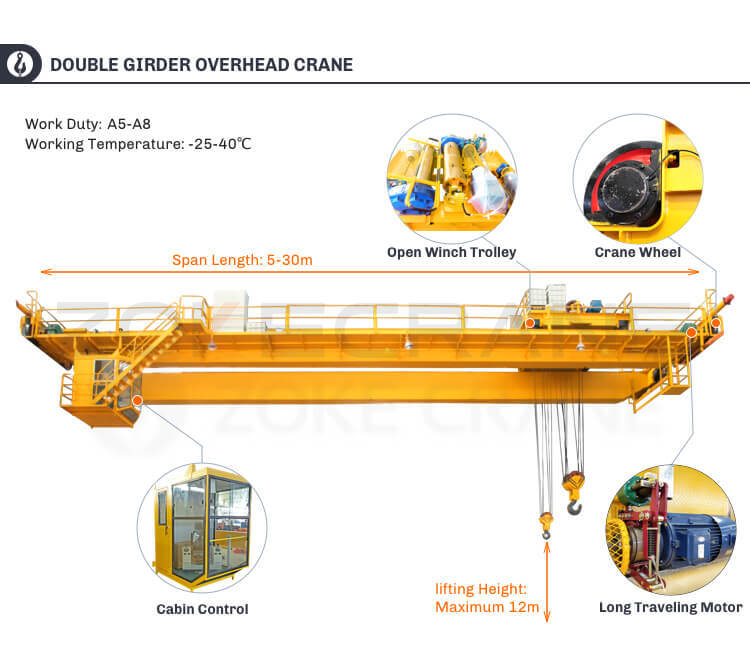
For heavy duty overhead crane maintenance difficulties to carry out specific inspection measures
1.Wheel faults: If a track problem is caused by a wheel track, it must first be measured and positioned during maintenance or repair. The badly worn track must then be replaced and straightness and other defects in the track repaired. If the rigidity of the bridge itself is not required, this can be solved by adding channels underneath the main girders. This can significantly reduce wheel consumption. To address the relative error of excessive outside diameter, repair the outside diameter of the wheels to meet the error requirement. When a heavy overhead crane bridge is deformed, the problem needs to be solved by using a heating correction method to adjust the wheel position and reduce the wheel span size error due to bridge deformation.
2.Brake failure: If the brake suddenly fails, adjust the lever nut above the brake bracket to change the length of the lever and restore it to normal. Brake pads worn to more than half their original thickness should always be replaced, or if worn to more than 5% then after replacement, the new shaft must be reamed and fitted to eliminate the effects of hole wear. Clean the brake wheel regularly with paraffin and lubricate the brake linings regularly to remove dirt. If the brake wheel temperature is too high, the brake bracket needs to be adjusted so that the brake band matches the brake wheel and the working ambient temperature is noted.
3.Electrical equipment failure: For main hook resistance, auxiliary hook resistance, busbar resistance and trolley resistance can reduce the lifting load of the crane in time to prevent prolonged low frequency operation. The workload should be reduced if continuous operation is too long and affects heat dissipation. Regularly check for wiring errors to avoid short circuits. Check screws regularly and replace them. Replace burnt out coils to repair contacts and disconnect wires to avoid damage to the contactor.
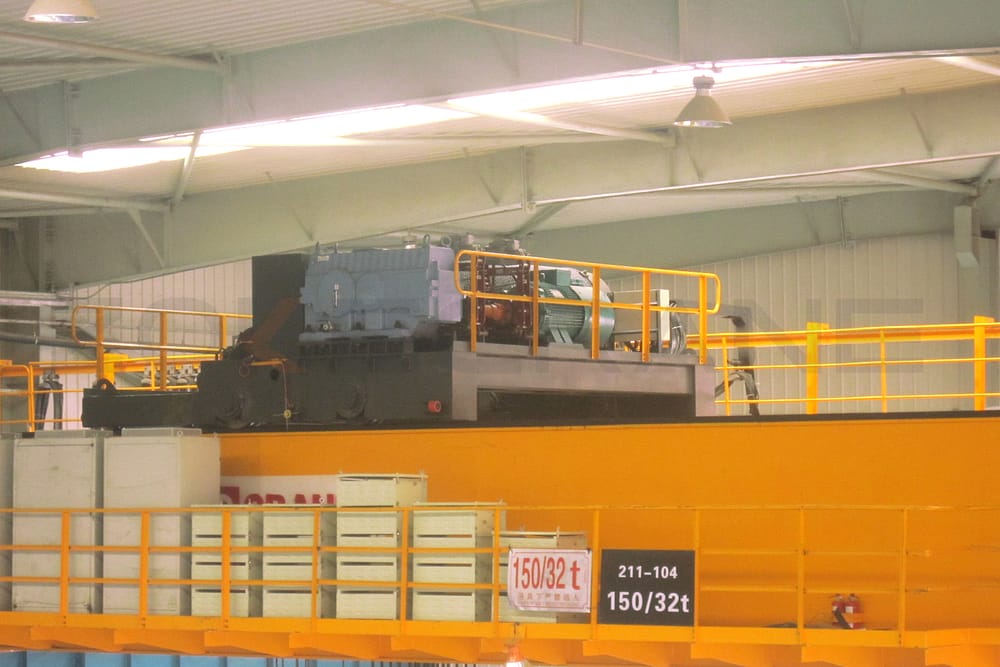
Crane is one of the most important lifting and transportation equipment, maintenance and maintenance and the safety of personnel and equipment directly related to the correct use and reasonable maintenance is an important part of crane management. In this paper, by analysing and summarising common fault problems and proposing relevant solutions, operators and maintenance personnel are able to better solve problems when identifying these fault characteristics to improve heavy overhead cranes.
